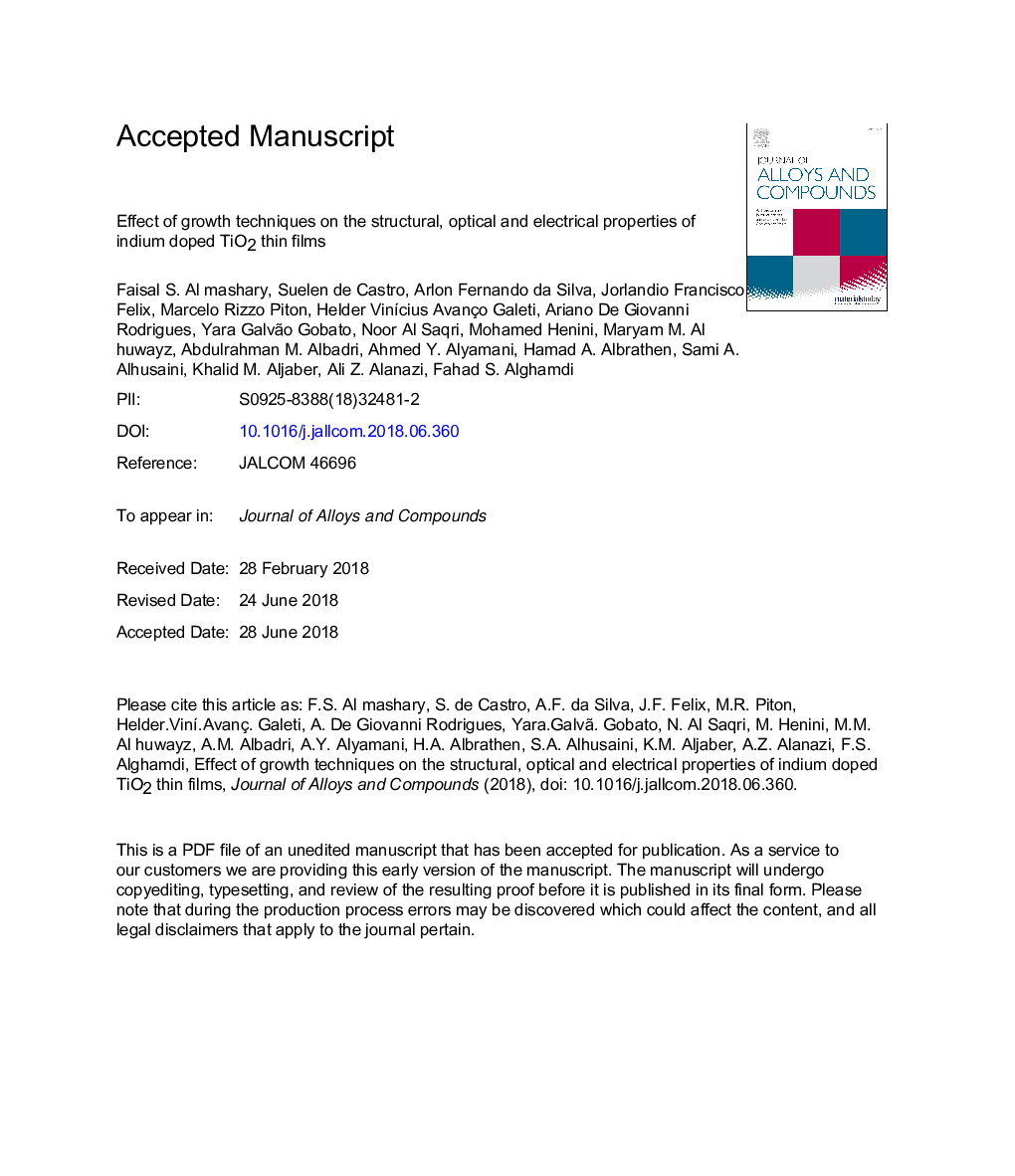| Article ID | Journal | Published Year | Pages | File Type |
|---|---|---|---|---|
| 7990352 | Journal of Alloys and Compounds | 2018 | 29 Pages |
Abstract
We have investigated the effect of the growth techniques on the structural, the electrically and optically active defects in Indium doped TiO2 thin films grown by pulsed laser deposition (PLD) and sputtering techniques. X-ray diffraction (XRD) and Raman spectroscopy patterns revealed both rutile and anatase phases for the sputtering samples. On the other hand, only the anatase phase was observed for the PLD samples. The photoluminescence (PL) spectra have unveiled several peaks which were explained by defect related optical transitions. Particularly, the PL bands are fully consistent with anatase/rutile TiO2 phases and the formation of In2O3 during the preparation of our samples. It was also observed that at â4â¯V reverse bias, the PLD samples have lower leakage currents (â¼1.4â¯Ãâ¯10â7 A) as compared to the sputtering samples (â¼5.9â¯Ãâ¯10â7 A). In addition, the PLD samples exhibited lower ideality factors and higher barrier heights as compared to those grown by sputtering. Finally, the Deep Level Transient Spectroscopy (DLTS) measurements have shown only one defect in the PLD samples whereas five defects have been detected in the sputtering samples. Therefore, our results provide strong evidence that the PLD technique is better suited for the growth of In-doped TiO2 thin films.
Related Topics
Physical Sciences and Engineering
Materials Science
Metals and Alloys
Authors
Faisal S. Al mashary, Suelen de Castro, Arlon Fernando da Silva, Jorlandio Francisco Felix, Marcelo Rizzo Piton, Helder VinÃcius Avanço Galeti, Ariano De Giovanni Rodrigues, Yara Galvão Gobato, Noor Al Saqri, Mohamed Henini, Maryam M. Al huwayz,
